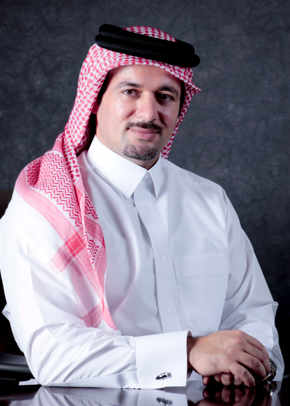Health IT takes hold around the world

For Australians living in rural and remote areas, far from high-quality clinical care found in urban centers, the NBN Enabled Telehealth Pilots Program could potentially alleviate the difficulty citizens face in accessing healthcare. The program, focusing on care for the aged, palliative care and cancer care, will fund a group of telehealth projects.
Developing and testing these services over the 2012-2013 and 2013-2014 financial years, program officials aim to demonstrate how, using the NBN infrastructure, health related transport needs can be reduced, and consumers can collaborate and communicate with their caregivers and health service providers to improve quality of care and health outcomes.
Telehealth services are scalable and able to provide an increased volume of care without a corresponding increased cost, they say, and use of a telehealth infrastructure may increase healthcare access and reduce social isolation.
 Doha, Qatar: Sidra Medical and Research Center
Doha, Qatar: Sidra Medical and Research Center
There is movement in Qatar toward improving healthcare. Qatar’s National Vision for 2030 sets two goals for the country’s development by that year: sustaining its own development and providing a high standard of living for its entire population.
“Sidra, as part of Qatar Foundation, aims to help deliver these goals through its vision of providing high quality patient care and unparalleled medical education, and becoming a leading center for biomedical research,” said Khalid Al Mohannadi, director of communications at Sidra, in a statement released to Healthcare IT News.
In the not too distant future, Sidra Medical and Research Center, a technologically advanced academic medical center, will be fully operational and open to patients.
 “Sidra's primary focus will be on specialty care for pregnant women and tertiary care for children,” said Mohannadi. Sidra will serve as a teaching hospital in partnership with Cornell University’s Weill Cornell Medical College in Qatar and it will conduct biomedical research in development and preventative medicine, pregnancy, health, and fertility, and women’s health. Mohannadi gave the end of 2013 as a target for fully equipping the center so that it can enter its commissioning and testing phase. Arabianbusiness.com reports that Sidra will be open to patients by 2015.
“Sidra's primary focus will be on specialty care for pregnant women and tertiary care for children,” said Mohannadi. Sidra will serve as a teaching hospital in partnership with Cornell University’s Weill Cornell Medical College in Qatar and it will conduct biomedical research in development and preventative medicine, pregnancy, health, and fertility, and women’s health. Mohannadi gave the end of 2013 as a target for fully equipping the center so that it can enter its commissioning and testing phase. Arabianbusiness.com reports that Sidra will be open to patients by 2015.
IT will feature prominently at Sidra. According to Mohannadi, Sidra will meet HIMSS Analytics Stage 6 at opening and Stage 7 soon thereafter.
[See also: Qatar taps Healthcare Solutions for integration work.]
“Sidra’s informatics system, called Patient Electronically Accessible Record for Life, PEARL, will ensure that patients and the healthcare professionals involved in their treatment will have instant and seamless access to accurate information at the touch of a button. Patients will be able to communicate with their providers and review their medical information via the patient portal, allowing them to be part of their own care.”
All this contributes to an IT-driven hospital experience, which includes “an in-room information system” where patients can identify their caregivers and access information about their care. Moreover, Sidra will outfit every patient with an RFID tag, which, said Mohannadi, “will be used to locate and track patients around the hospital, ensuring that they are safe, comfortable and enjoy personalized medicine across their continuum of care.”
Denmark: sundhed.dk
Denmark is widely regarded as offering some of the best healthcare in the world in terms of both patient satisfaction and affordability. The entire population receives coverage from the country’s publicly funded system.
IT has factored heavily into this success. To better understand why the Danish healthcare system works so well, it is important to look at the national eHealth portal, sundhed.dk (sundhed is Danish for “health”).
[See also: Southern Denmark: telemedicine and assisted living solutions rolled out.]
According to the portal’s website, representatives from numerous countries have consulted sundhed.dk to learn how they can realize similar health IT success.
 Asked which feature could translate universally to health IT strategies, Morten Elbæk Petersen told Healthcare IT News in a statement: “I think it must be the anywhere anytime access to EHR for every citizen at every hospital and GP!”
Asked which feature could translate universally to health IT strategies, Morten Elbæk Petersen told Healthcare IT News in a statement: “I think it must be the anywhere anytime access to EHR for every citizen at every hospital and GP!”
Sundhed.dk, which launched in 2003, is a full-scale, nationwide solution, bypassing any issues of incompatibility among a multitude of local solutions. The portal serves as a communication platform between GPs and patients. Clinicians can access patient information once it has been uploaded to the EHR and share information with other providers. Patients can access their EHR securely and research available providers to determine the ones most suited to their particular care. The platform contains official health information approved by specialists from a variety of services.
Sundhed.dk also houses online patient communities, an example of healthcare successfully establishing social media to bring together similarly affected patients to share their experiences and cope together. While only portal registrants can publish to these communities, everyone can access them.
Sundhed.dk is a service to watch as healthcare in Denmark becomes increasingly digital.
“In Denmark the digital services from the public sector started as an extra channel that could be used for convenience,” said Petersen, “The government, however, has an ambitious goal that 80 percent of the communication between the public sector and the citizens should be digital by 2015. This means making the digital channels mandatory/first choice for most citizens and cutting the costs involved in providing the traditional non-digital channels. This development may of course result in more users as other channels cease to exist.”
More on healthcare IT around the world
The projects listed above are of course only a small sampling of all the exciting HIT work under way all over the world. To learn more, check out the following sites:
HUB (healthunbound.org), a network and knowledge resource center for members of the worldwide mHealth community, powered by the mHealth Alliance.
The WHO’s Global Observatory for eHealth (http://www.who.int/goe/en/) has a directory of eHealth policies for its individual member states.
























